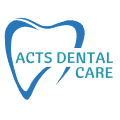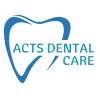Removing wisdom teeth can often leave you feeling uncomfortable, but managing your pain effectively doesn’t have to be a struggle. This article offers practical tips to help you manage pain after wisdom teeth removal, ensuring your recovery is as smooth as possible. By following straightforward advice, you can significantly reduce discomfort and speed up your healing process. We’re here to support you every step of the way with clear, useful guidance that makes your post-operative care easier.
Easing Pain After Wisdom Teeth Surgery
Easing pain after wisdom teeth extraction is crucial for a quick recovery. Here’s how you can minimise discomfort and help the healing process:
Cold Packs: Apply a cold pack to the outside of your cheek near the extraction site. Use it for 15 minutes on and 15 minutes off during the first 24 hours after surgery. This can help reduce swelling and numb the pain.
Keep Your Head Elevated: For the first few nights, sleep with your head elevated using a couple of pillows. This position helps decrease swelling and can reduce pain.
Salt Water Rinse: Starting 24 hours after surgery, gently rinse your mouth with warm salt water every few hours and after meals. Mix 1 teaspoon of salt in a glass of warm water. This helps to keep the area clean and reduce soreness.
Avoid Hard and Crunchy Foods: For the first few days, stick to soft foods like yogurt, soup, and applesauce. Hard or crunchy foods can irritate the wound and worsen pain.
Stay Hydrated: Drink plenty of water to stay hydrated, but avoid using a straw, as the sucking motion can dislodge the blood clot that forms in the socket.
Rest: Take it easy for a few days after your surgery. Avoid strenuous activities as they can increase bleeding and swelling, prolonging your recovery time.
Following these tips should help you manage pain effectively and foster a quicker recovery after your wisdom teeth surgery.
Before You Leave the Clinic
Before you leave the clinic after your wisdom teeth removal, it’s important to start managing your pain right away. Here are some practical steps to follow immediately after the procedure:
Get Clear Instructions: Make sure you understand your dentist’s advice on how to look after the extraction site. Ask for a written copy, if possible, so you can refer to it once you’re home.
Painkillers: Your dentist might give you a prescription for pain relief. Take the first dose before the anaesthesia wears off to manage the initial discomfort effectively.
Gauze Pad: Keep the gauze pad placed by your dentist over the extraction site for at least 30 minutes after the procedure. Bite down gently to reduce bleeding and help a clot form.
Activity Level: Avoid any physical activity for the rest of the day. Rest as much as possible to allow your body to start the healing process.
Prepare Ice Packs: Have ice packs ready at home to help reduce swelling and numb the area, which you should use as directed in your aftercare instructions.
Taking these steps will help you manage the initial pain and set you on the path to a smoother recovery.
Pain Relief Medications Explained
When it comes to managing pain after wisdom teeth removal, understanding your medication options is key. Here’s a clear breakdown of both over-the-counter and prescription pain relief options and how to use them safely:
Over-the-Counter Pain Relievers
Ibuprofen (e.g., Nurofen): Helps reduce inflammation and pain. You can take 200-400 mg every 4-6 hours as needed but don’t exceed 1,200 mg in 24 hours unless advised by a healthcare provider.
Paracetamol (e.g., Panadol): Effective for mild to moderate pain. The usual dose is 500 mg to 1 g every 4-6 hours, with a maximum of 4 g per day.
Prescription Pain Medications
Codeine: Often combined with paracetamol for more severe pain. It’s stronger but can cause drowsiness and constipation, so use it as prescribed by your dentist.
Other Opioids: Sometimes, for very severe pain, a stronger opioid may be prescribed. These should be used strictly as directed because of the risk of addiction and side effects.
Using Medications Safely
Follow Directions: Always use medications as directed by the packaging or your Perth dentist.
Watch for Side Effects: Be aware of potential side effects like nausea, drowsiness, or allergic reactions. If you experience any, contact your healthcare provider.
Avoid Mixing Medications: Don’t mix prescription painkillers with alcohol or other drugs. Also, be cautious about taking multiple types of pain relievers together unless advised by a doctor.
Understanding and following these guidelines will help you manage your pain effectively and safely after wisdom teeth surgery.
Home Remedies for Soothing Pain
While some patients may find relief with natural remedies, it’s important to approach these treatments with caution due to the limited clinical evidence supporting their effectiveness for dental pain. Here’s a list of natural methods to try:
Cold Compress: Use an ice pack or a bag of frozen peas wrapped in a towel. Apply it to your jaw to reduce swelling and numb the pain. Use for 15 minutes on, then 15 minutes off.
Warm Salt Water Rinses: From the second day after surgery, rinse your mouth gently with warm salt water several times a day to reduce swelling and soothe sore gums. Mix one teaspoon of salt in a cup of warm water.
Clove Oil: Known for its numbing properties, clove oil can be a quick fix for dental pain. Apply a small amount to a cotton ball and dab it gently on the sore area. Be cautious, as excessive use can cause irritation and damage to the gums and mucous membranes. Consult with your dentist before applying clove oil to the extraction site.
Peppermint Tea Bags: Peppermint has anti-inflammatory properties and may provide temporary relief when applied as a cool compress. Cool a used tea bag and apply it gently to the affected area to help soothe discomfort.
Turmeric Paste: Turmeric is celebrated for its anti-inflammatory properties, but its effectiveness in post-operative care is not well-documented. If choosing to use it, mix turmeric powder with water to form a paste, apply it briefly to the extraction site, and then rinse gently. It’s best to discuss this with your healthcare provider to ensure it’s safe and appropriate for your specific situation.
These home remedies are simple and can be quite effective in managing your pain naturally. However, if pain persists or worsens, it’s important to consult your South Perth dentist.
What to Eat and Avoid
After wisdom teeth removal, choosing the right foods can make a big difference in your recovery process. Here’s a guide on what to eat and what to avoid to help manage pain and ensure a smooth healing journey:
Foods to Eat
Soft Fruits: Applesauce, banana, and other soft fruits are gentle on the mouth.
Smoothies: Packed with nutrients, smoothies can be soothing if consumed without a straw to prevent dislodging the blood clot.
Broths and Soups: Warm (not hot) soups and broths are easy to consume and hydrating.
Mashed Potatoes: Soft, comforting, and filling, mashed potatoes can be a good source of energy.
Yogurt: Cool and creamy, yogurt is easy on the extraction site and can help soothe inflamed tissues.
Scrambled Eggs: Protein-rich and soft, scrambled eggs are easy to chew and swallow.
Oatmeal: Make sure it’s lukewarm; oatmeal is nutritious and gentle on the mouth.
Foods to Avoid
Crunchy Snacks: Chips, popcorn, and crackers can irritate the wound or become lodged in the socket.
Spicy Foods: These can inflame the extraction sites and cause discomfort.
Hard Fruits and Vegetables: Raw carrots, apples, and other hard produce can disrupt the healing area.
Chewy Foods: Gum, steak, or candies that require a lot of chewing can strain the surgical site.
Alcoholic Beverages: Alcohol can dry out the mouth and negatively interact with prescribed medications.
By sticking to the recommended foods and steering clear of the ones to avoid, you can help manage your pain better and speed up your recovery. Remember, the goal is to keep the wound clean and irritation-free while getting the nutrition you need to heal.
Signs Your Pain Isn’t Normal
It’s normal to experience some discomfort after wisdom teeth removal, but some symptoms might signal that something isn’t right. Here’s a list of signs that suggest your pain isn’t normal and that you should consult your dentist or doctor:
Persistent Pain: Pain that doesn’t improve with prescribed medications or worsens over time.
Severe Swelling: Some swelling is normal, but if it worsens after the second day or doesn’t start to decrease after 72 hours, it’s a concern.
Fever: A low-grade fever immediately after surgery is not uncommon, but a high fever or one that persists might indicate an infection.
Pus or Unusual Discharge: Any sign of pus or foul-smelling discharge from the extraction site.
Difficulty Opening Your Mouth: If you find it progressively harder to open your mouth, this could be a sign of infection or other complications.
Persistent Bleeding: While some bleeding is expected in the first 24 hours, continuous or severe bleeding is not normal.
Numbness: Lingering numbness well beyond the expected timeframe of anesthetic wear-off could indicate nerve issues.
If you notice any of these symptoms, don’t wait. Contact your dentist or healthcare provider to get checked out. Early intervention can prevent further complications and help ensure a smoother recovery.
Keep Your Recovery on Track
Keeping your recovery on track after wisdom teeth removal is crucial for healing well and avoiding complications. Here are simple steps you can follow to ensure a smooth recovery:
Follow Your Dentist’s Instructions: Stick to the care regimen your dentist outlines. This includes how to clean the surgical site, when to take medications, and what activities to avoid.
Rest Adequately: Take it easy for at least the first 48 hours. Avoid strenuous activities that could increase blood flow to the area and lead to bleeding.
Stay Hydrated: Drinking plenty of water helps the body heal. Avoid alcohol, caffeine, and smoking, as these can hinder the healing process.
Maintain Good Oral Hygiene: Gently brush your teeth around the extraction site to keep them clean. Avoid rinsing vigorously and use a saltwater rinse if recommended by your dentist.
Eat Nutritious Foods: Consume soft, nutrient-rich foods like soups, yogurts, and smoothies. Nutrition plays a big role in how quickly you heal.
Watch for Signs of Complications: Keep an eye out for any symptoms of infection or unusual changes in your recovery. Contact your dentist if something doesn’t feel right.
By following these steps, you can help ensure that your recovery from wisdom teeth removal is as pain-free and quick as possible. For further reading about wisdom teeth, refer to our comprehensive guide on wisdom teeth removal in Perth.
Book Your Follow-Up Appointment
Ensure your recovery is on track by booking a follow-up appointment with us today. A post-operative check is crucial to monitor your healing process and address any concerns swiftly. We take pride in being a HCF preferred provider, NIB preferred provider, Bupa preferred provider, Medibank preferred provider, and HBF preferred provider dentist in Perth.
Contact us (08) 9474 5083 to secure a time that suits you, and let us help you achieve the best recovery possible. Your health and comfort are our top priorities.


